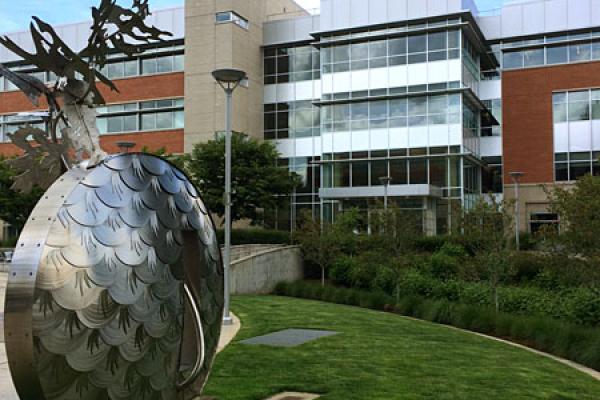"My heart arose in gratitude to God that we had been spared to reach this land! Six long months have elapsed since we left our native land, and now after having passed through dangers seen and unseen, sickness, trial and difficulty, toil and fatigue, we are safely landed on the Pacific shores!"
Ester Hanna
September 16, 1852
The Barlow Road in Clackamas County
 Many early pioneers recorded their journey along the Barlow Road, the westernmost segment of the Oregon Trail, in their diaries and journals. In doing so, they not only documented their daily life along the trail, but described the location of this historic roadway.
Many early pioneers recorded their journey along the Barlow Road, the westernmost segment of the Oregon Trail, in their diaries and journals. In doing so, they not only documented their daily life along the trail, but described the location of this historic roadway.
With this information and physical evidence from the historic roadway, history buffs, property owners and archeologists have been able to determine the location of the Barlow Road in Clackamas County. The preservation of the Barlow Road began with the pioneers, has been managed through numerous property owners and historians, and is now the responsibility of the current land owners.
In 1993, the Barlow Road Management Plan was adopted by the Clackamas County Board of Commissioners through an extensive public process. The Plan outlined ways to preserve the Barlow Road for education and enjoyment today and in the future, and identified the need to develop a brochure to aid property owners in maintaining their portion of the Barlow Road.
Today there are traces of the original Barlow Road on only 11 miles of the total 50-mile Barlow Road Historic Corridor in Clackamas County. Much of the road has vanished (often in recent years) due to residential and commercial development, agricultural use and natural erosion. The low visibility of many of the remaining traces also makes them vulnerable, particularly when involving a variety of property owners who may be unaware of the remnants, have varying degrees of interest or do not know how to care for the road. Therefore, the following information is provided to help protect and preserve existing road remnants and the historic landscape to avoid further loss.

Eight simple guidelines
- Let low native grasses grow
Native vegetation helps prevent erosion of the land. - Leave the larger trees (over 18 inches in diameter)
These trees help date the road and may determine when the road was abandoned. - Leave rocks and boulders in place
Rocks were often moved by pioneers to make way for their wagons. - Do not disturb the surface of the roadway
Leave the soil and original grade of land intact for research purposes. - Prune trees if needed
Prune during the spring or fall to avoid damage to their natural growth pattern. - Remove seedlings, fallen trees and brush from the roadbed
This should not be done with heavy equipment, which may disturb the road surface. - Search for artifacts
Look for nails, barrel rims, horseshoes, ox shoes, signs of structures, etc. on the surface and for 200 feet either side of the trail. Leave objects where they are found, but mark the spot or document the object's location so it can be used in the future by research historians. Seek assistance when unable to determine the historical nature of possible artifacts.
Contact the Clackamas County Department of Transportation and Development with any information which can be included with other Barlow Road documentation. - Remove non-historic items
Remove any trash or objects foreign to the historic character of the roadbed.
Preserving the road
Preservation, in general, means the least change and the most respect for historic sites which, in this case, is primarily the land and vegetation itself. The Barlow Road, being the final segment of the Oregon Trail, is different from other portions in the United States because it traverses through land forested with Douglas-fir. Most wagon ruts are no longer visible and vegetation is often very dense. The road now appears as a flat open swale or depression of land roughly 8 to 10 feet wide, often overgrown with brush or berries with larger trees and sometimes boulders on either side of the swale. In order to retain the atmosphere of what the settlers may have seen along the way, the width of the road and its contour should not be altered. The older trees and plants should be preserved because the trees can help date the trail and the other native vegetation protects it from erosion. Therefore, the property can be maintained with a small amount of effort.
Not every property along the Barlow Road Historic Corridor has clearly visible remnants of the road. However, those properties with little physical evidence are important because they are part of the historic corridor and contribute to the continuity of the entire Barlow Road.
Why preserve?
Preserving historic roads creates a connection with and appreciation for how people traveled and lived during the Western emigration. The remaining bits of evidence along the road may be few and far between, but they are elements of an important chapter in Oregon history. Each property is part of a network that makes up the history of the Barlow Road, and the Barlow Road Historic Corridor can only he managed through a partnership with the property owners. Participation in this preservation program is voluntary. Property owners who are active in maintaining their land should be praised for their dedication and hard work, and encouraged to continue their efforts. Property-owner stewardship is essential for saving this invaluable and irreplaceable piece of history and the only way to keep the Barlow Road Historic Corridor intact for future generations.
For more information, contact:
Historic Resource Planner
Clackamas County Department of Transportation and Development
Special thanks to:
Mazamas
US Forest Service
Cover Photo:
Oregon Historical Society
Negative Number OrHi 178 Lot 606
Published 1983. Revised 2008.
 Translate
Translate






